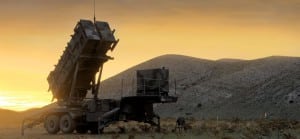
The Army is focusing on rebuilding readiness as its number one funding priority, but the emphasis is sucking up funds that could be used for much-needed modernization, the Commission on the Future of the Army found.Chief of Staff Gen. Mark Milley has trumpeted readiness as a priority over all else at nearly all of his public appearances since assuming the post last year. Readiness is indeed important for an Army that is downsizing under budget constraints and coming off of…

 By
By 











